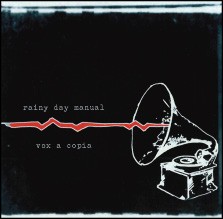In a Monday editorial titled “Sucker Punch,” The Washington
Post said the Herenton-Cohen 2010 congressional race “gets ugly”
and Willie Herenton is “jumping into the gutter with low-road tactics
that divide rather than enlighten.”
The editorial took Shelby County commissioner and Herenton supporter
Sidney Chism to task for saying the 9th Congressional District seat
“was set aside for people who look like me. It wasn’t set aside for a
Jew or a Christian. It was set aside so that blacks could have
representation.” The Post says “someone forgot to tell the
district’s free-thinking voters” who sent Cohen to Washington in 2006
and 2008.
Or maybe them big-city Yankee editorial writers ought to take off
their rose-colored glasses. Chism got sucker-punched for plain
speaking. If his statement is not literally correct, it is essentially
correct, and history backs him up.
Whatever it is today, Memphis was no racial utopia in the events
leading to the tangled creation of the 9th district.
Race has been at the core of every major Memphis redistricting,
annexation, and runoff-election decision for at least 50 years. The 9th
is the only district in Tennessee located within one county and the
only one ever to have a black representative. It was eliminated in 1973
based on the 1970 census.
In the 1974 congressional election, white flight from school busing,
the Watergate scandal, and a big increase in black voter registration
allowed Harold Ford Sr. to beat a white Republican opponent by only 774
votes out of 135,000 votes. A tweak of the district lines here or there
and it might have been different. The district was recreated as a
majority-black district with a preponderance of Democrats in 1983 based
on the 1980 census.
Prior to Ford’s election, it was common knowledge that in a racially
mixed city like Memphis, elections could be rigged in favor of white
candidates by carefully drawing district lines, selective annexation,
and runoff elections. In 1966, civil rights pioneer Vasco Smith, who
died this week, said, “We don’t stand a ghost of a chance in this town
when it comes to running at large.” Eventually, the federal courts
agreed and, in the process, officially acknowledged the impact of
racial bloc voting. In 1991, at the urging of the U.S. Justice
Department, a judge in Memphis struck down runoff elections for the
specific reason that they penalized black candidates in mayoral and
at-large city council elections. Which was what blacks had been saying
for decades.
The immediate beneficiary, of course, was Herenton, who won the 1991
election with 49.4 percent. An indirect beneficiary was Steve Cohen,
who won the 2006 Democratic primary with about one third of the vote
before winning the general election with 60 percent.
The former mayor and educator knows better than anyone the impact of
race on elections, annexations, housing patterns, and public school
enrollment. As a principal and superintendent, he witnessed white
flight from the school system and did what he could to slow it down by
supporting optional schools. He also took the heat for closing several
black schools.
He believed in integration, and he knew public support would
dissipate for an all-black system. In one of his first interviews as
mayor in 1992, he told me the same thing about the city as a whole, if
it went the way of Detroit, and he correctly predicted that white
enrollment in the schools would drop below 10 percent. It is now 7
percent.
Herenton the unifier has been forgotten by most people, including,
it often seems, himself. His horrible decisions and word choices had a
lot to do with it.
In an interview quoted in The New York Times, which like
The Washington Post has taken a fancy to this story, he said “to
know Steve Cohen is to know that he really does not think very much of
African Americans” and that Cohen “has played the black community
well.”
Cohen fired back in a letter to the Times published last
week, noting that he was reelected in 2008 with nearly 80 percent,
foreshadowing, he wrote, the election of Barack Obama.
“We’ve come a long way in Memphis, and ours is a story of
post-racial politics.”
We’ll see, and the national media will be watching.
 Photo: John Betancourt
Photo: John Betancourt 


